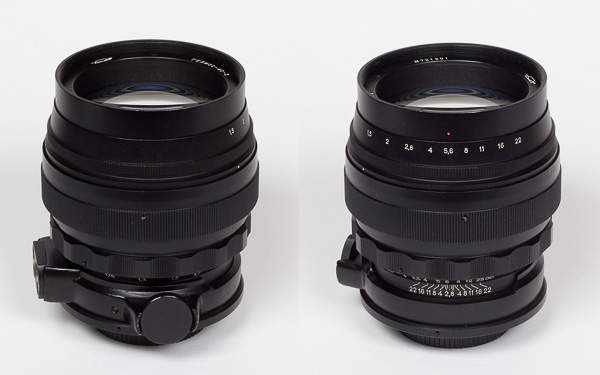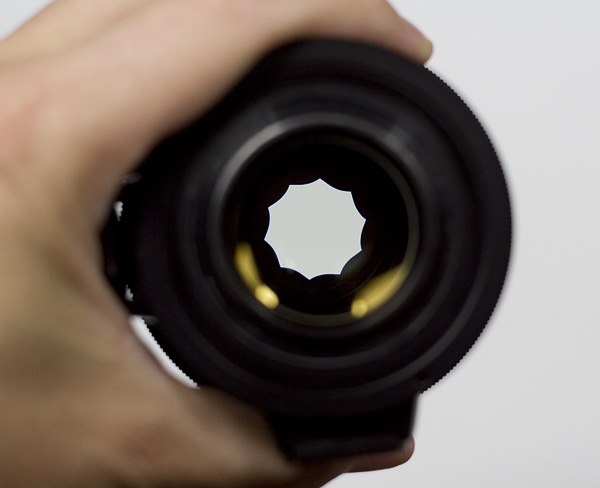|
Page 1 of 3

Review by Klaus Schroiff, published May 2007
Special thanks to Jens Rösner for providing this lens!
Introduction
Those who know me a little are probably aware that I've always had a liking for underdogs
which is why I've quite enjoyed to review this strange being - a Russian-made Helios 40-2 85mm f/1.5.
It is an M42-mount lens so it can be used on most systems out there via an adapter. M42 also means
that this is an all-manual lens - no AF and no camera-controlled (automatic) aperture. So
why bother ? Well, it offers an ultra large max. aperture of f/1.5 and it goes for about
200€ over in the bay and other places (when digging a little). When used on an APS-C DSLR
the field-of-view is equivalent to ~128mm and combined with the large max. aperture it's obviously
a pretty attractive lens e.g. for portrait photography - on paper at least.

Now how do you use such a lens on a Pentax DSLR such as the K10D ? As mentioned you
need a M42-to-Pentax K adapter to start with. Jens, the owner, removed the spring from the adapter
in order to simplify the mounting procedure (this is optional). Due to the lack of an
automatic aperture you've to use stop-down metering - this works as follows: set the aperture
to the desired f-stop and close the aperture via the secondary control ring on the lens
(consequently the viewfinder darkens). In M (manual) mode you can now press the "green" button
to activate the metering system of the K10D to take a reading.
The focusing is naturally best done at max. aperture (bright viewfinder + shallow depth-of-field).
Fortunately the K10D does still provide the focus confirmation in the viewfinder so this
is not all that difficult. On non-Pentax system the procedure is different and usually you don't
have any help from the focus indicator unless you get one of those new electronic M42-adapter.

The Helios is a tank with all out parts made of metal and surely capable enough to
withstand the heat of the cold war (the lens was released in 1979). Everything's just massive
and the weight (~1Kg) is accordingly. The lens has also a dedicated tripod mount although the
plate is so tiny that you better stick to the camera if you want to use it on a tripod.
The focus ring operates smooth and very well damped. The secondary aperture control ring
feels quite lifeless though. It is an internal focus lens which does not changes its size
during focusing and the front element does not rotate. The tested sample was slightly
miscalibrated - it did not provide infinity focus.
As you can see below the aperture mechanism doesn't really produce a "circle" when stopping down.
However, the quality of the bokeh (the out-of-focus blur) is actually quite Ok.

Please note that there's also a older silver-finished variant of this lens - the Helios 40 85mm f/1.5.
The "current" 40-2 has a multi-coating whereas the old lens has not. The filter-size of the
predecessor lens is also quite odd (66mm vs 67mm).
| Specifications |
|---|
| Equiv. focal length | 127.5 mm (full format equivalent) |
| Equiv. aperture | f/2.3 (full format equivalent, in terms of depth-of-field) |
| Optical construction | 6 elements in 4 groups |
| Number of aperture blades | 10 |
| min. focus distance | 0.8 m (max. magnification ratio ?) |
| Dimensions | 82 x 84 mm |
| Weight | 885 g |
| Filter size | 67 mm (non-rotating) |
| Hood | - |
| Other features | - |
|